Paddle turns a Rubik's puzzle into a mobile device (w/ Video)
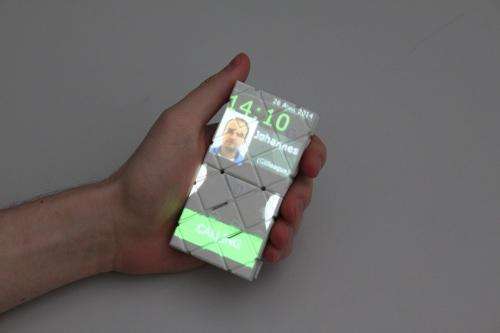
Recently, major electronics manufacturers displayed new types of screens that are thin and flexible for integration in mobile devices and e-readers. Looking one step further, a team of researchers from Hasselt University at the Expertise Centre for Digital Media in Belgium investigated how the compact mechanisms used in the construction of 3D puzzles could be used to build a device flexible enough tp be transformed from a compact phone to a tablet or game controller.
This futuristic device is called Paddle, and is based on engineering principles used for the design of the Rubik's Magic, a folding plate puzzle. The neat thing about this puzzle is a unique transformation model which allows users to switch between completely different shapes in only a few steps. Similarly, users can easily transform Paddle from a compact phone to a tablet for reading or a wristband for running. People like the comfort that devices designed for a specific task provide, but don't prefer to buy or carry such an arsenal of devices.
The topology of the current version of Paddle uses an optical tracking system with a projector for visual output. Although this impedes the mobility of Paddle, advances in flexible electronics within the next five to ten years will make it possible to manufacture versions that are entirely self-contained using tiny integrated displays. These displays could be integrated seamlessly into the design as the wires necessary for connecting these displays can replace the fish wires currently used for the hinges of the Paddle.
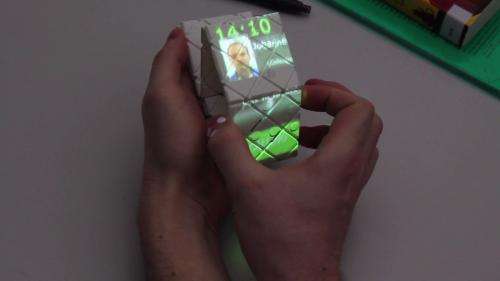
As Paddle is highly deformable, the device can also transform to various physical controls, such as a phone clamshell (similar to the old-school flip phone), a ring to scroll through a list or a book-like form factor to leaf through the pages of an agenda. These kind of physical controls have all been replaced by touch interactions in the latest generation of mobile devices as touch screens can display different controls for every application. However, touch screens fall short of embracing human sensory richness or the physical dexterity people have developed through a lifetime of interacting with objects in the real world. Paddle allows for various physical controls to co-exist in a single device. Paddle thus combines the flexibility of touch screens with the physical qualities that real-world controls provide.

The researchers conducted several experiments with Paddle in their lab in Hasselt. One result shows that people are significantly better in the recall of structure as well as content after physically leafing through a book using Paddle compared to traditional touch. The physical leafing interaction offered by Paddle facilitated the process of picturing content on different pages of a book, resulting in a better recall of structure and content. All findings will be presented in April at the international conference on Human factors in Computing Systems (CHI 2014), the premier forum on Human Computer Interaction held in Toronto, Canada.
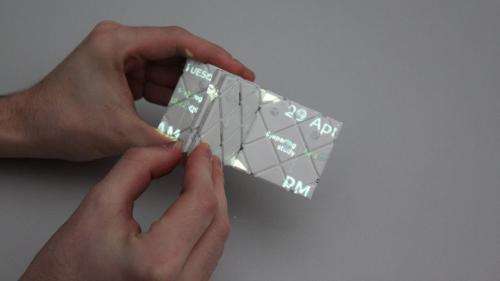
Although it is reasonable to transform a compact phone to a tablet for reading a book on the train, it is unknown if users are willing to do transformations when the interaction with that form factor will last for only a few seconds. Therefore, the developers plan to investigate how the system can assist in training users' muscle memory to do these transformations unconsciously in fraction of a second, similar to how speed cubers are able to solve Rubik's puzzles in less than a second. In contrast to traditional touch screens, devices in the future might account for full capacity of human motor skills.
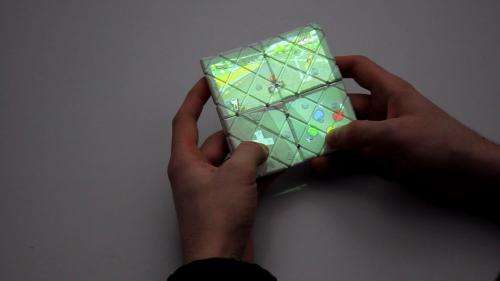

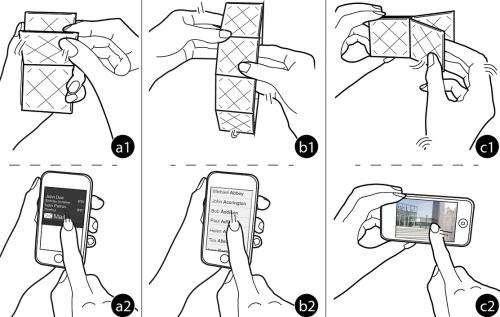
More information: Project page: www.raframakers.net/wiki/Main/Paddle
Source: Hasselt University at the Expertise Centre for Digital Media





















